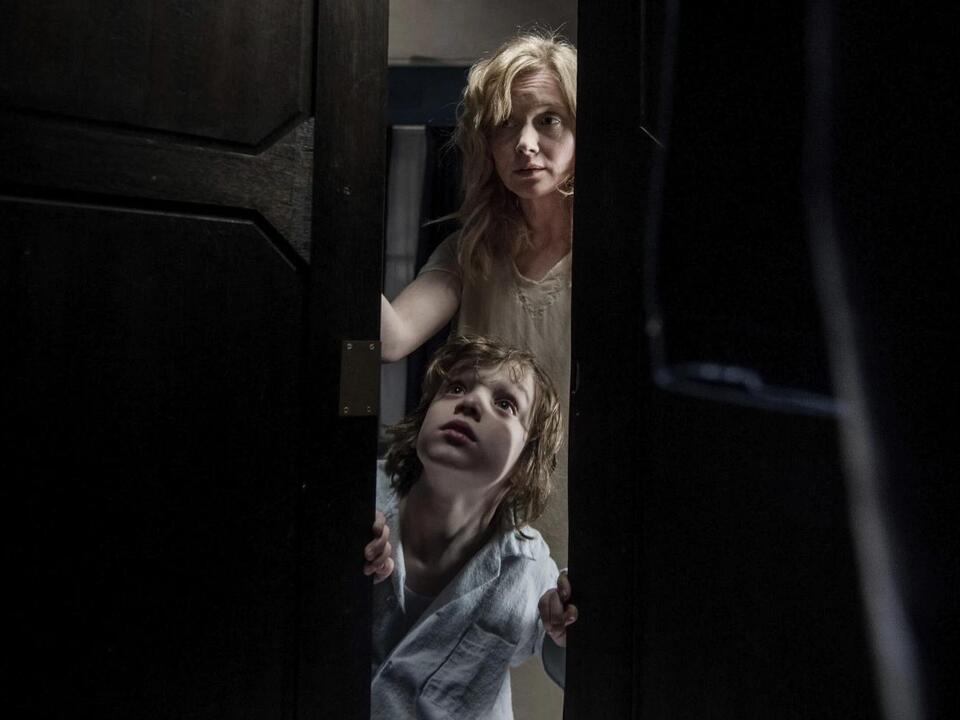Physical Address
304 North Cardinal St.
Dorchester Center, MA 02124
Physical Address
304 North Cardinal St.
Dorchester Center, MA 02124

NEW YORK (AP) — When Jennifer Kent’s “The Babadook” premiered in theaters a decade ago, it played on just two screens. Next month, it re-emerges in theaters, but this time on 500 screens.
“It’s strange but wonderful. I can’t believe it’s been 10 years already. But going back is fantastic,” says Kent from Australia. “Considering its limited initial release, I’m proud that it’s still enduring.”
“The Babadook,” a chilling horror film about parenthood, helped ignite a new era of bold, cinematic horror films. It’s one of many movies celebrating anniversaries with theatrical re-releases this year. These days, at almost any movie theater, you not only find new titles but a mix of older films as well.
Despite the ease of watching movies at home, classic films are experiencing a significant resurgence on the big screen. Repertory cinema, once an arthouse staple, is now also part of multiplexes.
In the past two weeks alone, the beloved 2009 stop-motion film “Coraline” by Laika Studios grossed over $25 million—a staggering amount for a 15-year-old movie. Earlier this year, Disney’s re-release of “Star Wars: Episode One – The Phantom Menace” earned $19.4 million globally.
This fall, audiences can expect anniversary releases of “Shaun of the Dead,” “Paris, Texas,” “Whiplash,” “Hoop Dreams,” “Interstellar,” and more. While classic film re-releases are nothing new (recent examples include “Seven Samurai” and “The Conversation”), the wide re-release of fairly recent films is a growing trend, and audiences are showing up in droves.
“The Babadook” originally earned $1 million in North America but could surpass that amount this time around.
“It has grown a new fan base,” says Nicole Weis, vice president of distribution for IFC. “Many fans didn’t see it in theaters initially. This re-release gives them a chance to experience it as intended, on the big screen.”
The theatrical industry hasn’t fully returned to pre-pandemic levels, partly due to fewer new films being released. The number of nationwide releases has declined for various reasons, including last year’s prolonged work stoppages.
To help fill gaps, the nation’s three largest theater chains—AMC, Regal, and Cinemark—created Fathom Events in 2005. It distributes live broadcasts of events like the Metropolitan Opera and special film showings such as the annual Studio Ghibli Fest. Fathom’s release of “Coraline,” including 3-D screenings, set a record for the company.
“Interest in classic movies has really skyrocketed,” says Ray Nutt, CEO of Fathom. “We’re seeing a 75% increase in this category compared to last year.”
Initially, Fathom targeted quiet days in cinemas like Mondays and Tuesdays but has since expanded. One of their biggest hits earlier this year was a run of the “Lord of the Rings” trilogy over a Saturday-Sunday-Monday stretch. Upcoming classics include anniversary showings of “Rear Window,” “Blazing Saddles,” “Mean Girls,” and “The Fifth Element.”
“We often debate what defines a classic movie,” says Nutt. “It used to be something like 50 years old, but now we’re celebrating films like ‘Coraline’ at just 15.”
Many streaming services often bury older films on their home pages. But in the digital sea of content, how new a movie is can be less relevant. “Titanic” and “The Equalizer” have both appeared on Netflix’s most-watched lists this summer.
The difference between viewing at home and in theaters is less about newness and more about the experience. Do you want to see “Jaws” at home while distracted or on a big screen with an engaged audience?
Mark Anastasio, program director of the Coolidge Corner Theatre, a six-screen non-profit cinema in Brookline, Massachusetts, noted a strong appeal for older films when reopening after the pandemic. At that time, first-run films were scarce.
“But interest in repertory never waned,” says Anastasio. “We used to run older films twice a week at 7 p.m., but now we show them every night, including weekends. And the demand is there.”
Now, Anastasio finds he can be more creative in programming, diving deeper into filmmaker catalogs with continued audience interest. He recently had a full house for a 35mm screening of Spike Lee’s “Inside Man” and success with William Friedkin’s 1977 thriller “Sorcerer.” Upcoming plans at the Coolidge include three weeks of 70mm screenings (“Lawrence of Arabia,” “Inception”) and a “Schlock and Awe” series of William Castle films, complete with original gimmicks like buzzing seats during “The Tingler.”
This sort of programming isn’t new for urban arthouses but is spreading to more theaters. More often, older films are now shown on screens typically reserved for first-run movies, partly out of necessity.
“There are 20-30% fewer major film releases now than just five years ago,” says Jeremy Boviard, general manager of the four-screen Moviehouse in Millerton, New York. “This creates more gaps in programming.”
Boviard has become more selective about what appeals to Hudson Valley moviegoers, but some choices resonate well. Last year, the 40th anniversary of Jonathan Demme’s “Stop Making Sense” was a hit. Released by A24, known for contemporary films, the concert film grossed over $5 million domestically.
This trend is expected to continue, with studios regularly seeking archival films for notable anniversaries.
For Kent, the resurgence is a bright spot in what she calls “a dark age for cinema.” “People still crave that experience,” she says. “I recently watched Dryer’s ‘Ordet’ and Bergman’s ‘The Seventh Seal’ in theaters. In ‘Ordet,’ the communal experience was transcendent—I heard people crying at the end. It’s why we go to cinemas: to have an experience, not just consume content at home. It’s essential, and I take it very seriously.”
Source: Associated Press



